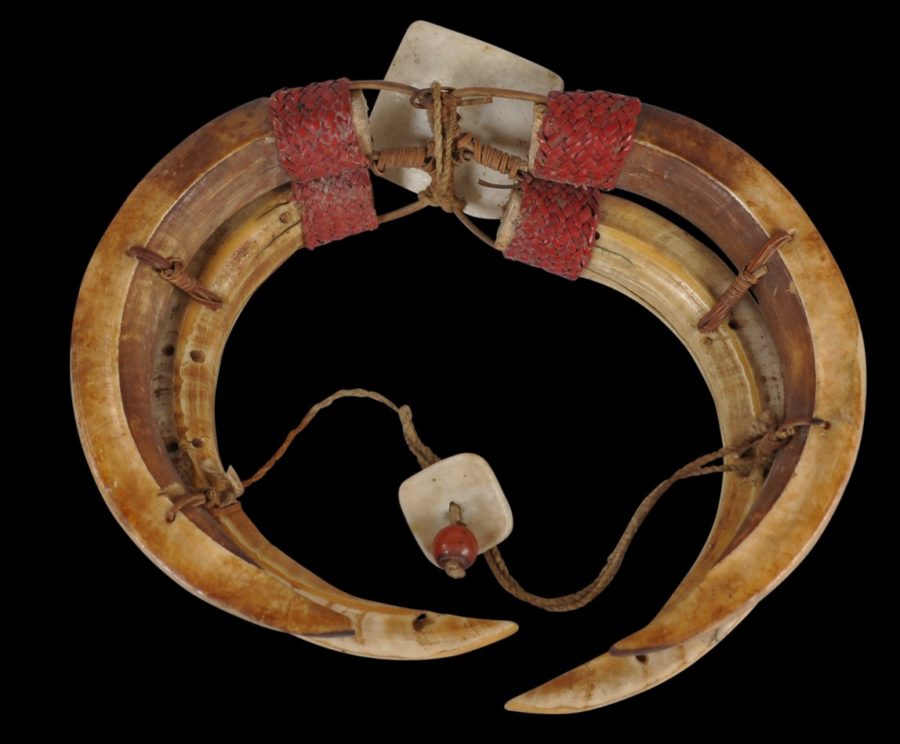Enquiry about object: 5729
Fine, Naga Man’s Boar Tusk Necklace with Shell & Carnelians
Naga People, Eastern India/Western Burma circa 1910
approximate width: 19cm, weight: 231g
Provenance
private collection, UK; reputedly obtained by a family member just after WWI during skirmishes with the Naga tribesmen in Bangladesh and Burma.
This splendid example of a necklace for a prominent male Naga warrior (possibly a Kalyo-Kengyu Naga of western Burma) comprises a double row of boar tusks held together by rattan strips. The end sat the front are decorated with beautifully woven red-dyed cane. A large, concave square toggle cut from shell sits at the front and this is held in place by two carnelian or orange agate beads.
The back of the necklace is strung with native cotton twine and this has a smaller toggle carved from shell and secured with one carnelian bead.
Plainer, less complex examples of single rows are illustrated in Leurquin (2003, p. 250), who says that such necklaces with tusks were presented during festivals to Naga men who had performed well during headhunting expeditions or boar hunts. The double row here suggests the owner was particularly brave and of high status.
The tusks here have old cracks and so on, but the patina on this piece is exceptional. It has come from a family in England which has had it since colonial times.
References
Jacobs, J., The Nagas: Hill Peoples of Northeast India, Thames & Hudson, 1990.
Leurquin, A., A World of Necklaces: Africa, Asia, Oceania, America from the Ghysels Collection, Skira, 2003.
Saul, J.D., The Naga of Burma: Their Festivals, Customs and Way of Life, Orchid Press, 2005.





